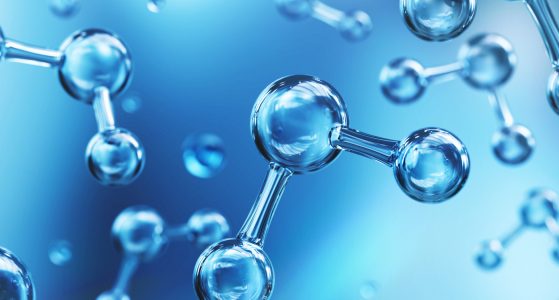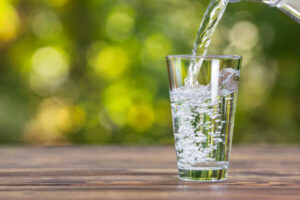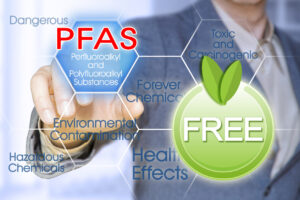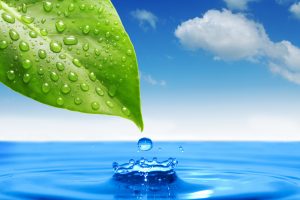Table of Contents
- 1 What is UV Drinking Water Disinfection?
- 2 How UV Disinfection of Drinking Water Works
- 3 Multiple UV Wavelengths for Enhanced UV Drinking Water Disinfection
- 4 Effectiveness of UV Light Drinking Water Treatment Against Pathogens
- 5 UV Light in the Removal of PFAS from Drinking Water
- 6 UV Light Drinking Water Disinfection Regulatory Standards and Guidelines
- 7 Advantages of UV Light Drinking Water Disinfection
- 8 Considerations for UV Drinking Water Disinfection Systems
- 9 UV Drinking Water Treatment Applications
- 10 Maintenance and Operation of UV Drinking Water Treatment Systems
- 11 Frequently Asked Questions
- 12 LightSources’ UV Drinking Water Disinfection Solutions
LightSources offers UVC germicidal lamps for use in disinfection applications, including water purification. UV drinking water disinfection can be more effective than chemical disinfectants because it can inactivate pathogens like Cryptosporidium and Giardia, which are resistant to chlorine. UVC disinfection also produces no harmful byproducts and does not alter the water’s color, taste, odor, or pH.
What is UV Drinking Water Disinfection?
Ultraviolet (UV) disinfection is a physical process that uses UV-C light to inactivate harmful microorganisms in drinking water. Exposing water to germicidal wavelengths of UV light disrupts the DNA and RNA of bacteria, viruses, and protozoa, rendering them unable to replicate and cause infection. This method of disinfection is chemical-free, effective, and does not alter the taste or odor of the water.
Ensuring the safety of drinking water is vital for public health. Contaminated water can lead to the spread of waterborne diseases, affecting millions of people worldwide. UV light drinking water disinfection is an efficient and environmentally friendly solution that helps protect communities from harmful pathogens without introducing chemicals into the water supply.
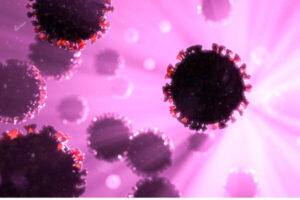 How UV Disinfection of Drinking Water Works
How UV Disinfection of Drinking Water Works
UV disinfection of drinking water relies on the germicidal properties of UV-C light, at proven effective wavelengths to inactivate harmful microorganisms in water. When water passes through a UV disinfection system, bacteria, viruses, and other pathogens are exposed to UV-C light, penetrating their cells and damaging their DNA and RNA. This damage prevents the microorganisms from reproducing, effectively neutralizing their ability to cause infections.
One of the key benefits of UV light drinking water disinfection is that it achieves this microbial inactivation without the use of chemicals like chlorine, leaving no harmful by-products or residues in the water. Importantly, the water’s natural taste, odor, and chemical composition remain unchanged.
Multiple UV Wavelengths for Enhanced UV Drinking Water Disinfection
While 254 nm is the most common wavelength used for germicidal disinfection, UV technology utilizes different wavelengths to enhance water treatment and disinfection processes, each offering specific benefits:
- 254 nm UV-C Radiation: This wavelength is highly effective in disrupting the genetic material of microorganisms, making it the primary choice for disinfection in most applications. When water passes through a UV system emitting 254 nm light, the DNA and RNA of bacteria, viruses, and protozoa are damaged, rendering them u
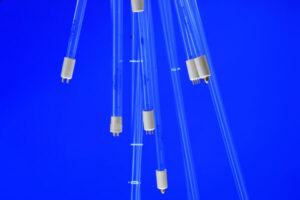 nable to reproduce and cause illness. This process is chemical-free and does not alter the taste, odor, or pH of the water, ensuring safe and clean drinking water.
nable to reproduce and cause illness. This process is chemical-free and does not alter the taste, odor, or pH of the water, ensuring safe and clean drinking water. - 185 nm UV Radiation: UV radiation at 185 nm is used to generate ozone within the water. Ozone is a potent natural bactericide capable of killing many viruses and bacteria, adding an extra layer of disinfection. The combination of UV and ozone is particularly useful for reducing total organic compounds (TOCs), chloramines, and other contaminants in drinking water. This dual action not only disinfects but also oxidizes pollutants, enhancing overall water quality.
- Far UV-C at 222 nm: Far UV-C light at 222 nm has been studied for its potential to inactivate pathogens while being safer for human exposure, as it does not penetrate human skin or eyes like standard 254 nm lamps. Recent research has shown that incorporating 222 nm UV light into advanced oxidation processes can enhance the efficiency of drinking water disinfection. This wavelength facilitates direct photolysis of contaminants and increases the production of reactive radicals when combined with hydrogen peroxide, leading to more efficient breakdown of harmful substances in municipal wastewater. By effectively purifying wastewater to potable quality, 222 nm UV light contributes to the sustainability of water reuse systems.
LightSources and LightTech offer a range of UV germicidal lamps, including:
and custom lamps that generate UV radiation in various wavelengths.
We offer ozone disinfection lamps that emit 185 nanometers (nm), far UVC lamps with wavelengths at 222 nm, and standard 254 nm UVC germicidal lamps. We provide flexible features, proprietary options, prototype development, and production solutions for municipal, industrial OEMs, and domestic UV water treatment worldwide. Our UVC germicidal lamps are engineered for various disinfection and oxidation applications, effectively treating water and reducing compounds like chloramines and TOCs.
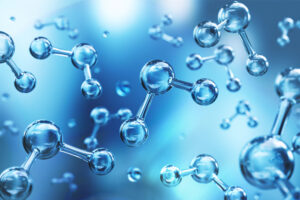 Effectiveness of UV Light Drinking Water Treatment Against Pathogens
Effectiveness of UV Light Drinking Water Treatment Against Pathogens
UV disinfection is highly effective against a broad spectrum of pathogens commonly found in drinking water. By disrupting the DNA and RNA of microorganisms, UV light renders them incapable of reproduction and infection. The effectiveness of UV drinking water disinfection extends to various types of pathogens:
- Bacteria: UV light effectively inactivates harmful bacteria such as Escherichia coli (E. coli), Salmonella, and Legionella. These bacteria can cause severe gastrointestinal illnesses and other infections. UV treatment ensures that these bacteria are neutralized without the use of chemicals, maintaining the water’s natural quality.
- Viruses: Pathogenic viruses, including poliovirus, rotavirus, and hepatitis A, are susceptible to UV disinfection. UV light damages the nucleic acids of viruses, preventing them from replicating and causing disease. This is particularly important as some viruses exhibit resistance to traditional chemical disinfectants.
- Protozoa: Protozoan parasites like Giardia lamblia and Cryptosporidium parvum are notable for their resistance to chemical disinfectants such as chlorine. UV disinfection is highly effective against these protozoa because UV light penetrates their protective cyst walls and inactivates them, safeguarding drinking water from these hard-to-eliminate pathogens.
Working with an experienced UV germicidal lamp supplier is the best way to achieve maximum effectiveness in any UV disinfection application. LightSources offers UVC germicidal lamps and solutions to OEMs worldwide with facilities in Europe, Asia, and the United States. We provide custom-engineered UV lamps, proprietary lamps, prototype development, and full-scale production solutions.
UV Light in the Removal of PFAS from Drinking Water
In addition to its effectiveness against microorganisms, UV light has shown promise in the degradation of Per- and Polyfluoroalkyl Substances (PFAS) in drinking water. PFAS are persistent environmental pollutants commonly found in water sources due to their widespread use in industrial and consumer products. Traditional water treatment methods often struggle to remove these chemicals. However, advanced oxidation processes that combine UV light with catalysts or oxidants can help break down PFAS molecules, reducing their concentration in water. It is possible to address PFAS contamination more effectively, contributing to safer drinking water, by integrating UV light into water purification systems. Learn more about UV Light in the Fight against PFAS Contamination.
UV Light Drinking Water Disinfection Regulatory Standards and Guidelines
The United States Environmental Protection Agency (EPA) offers detailed guidance on UV light for drinking water disinfection technology through its Ultraviolet Disinfection Guidance Manual. This manual covers a range of topics, including UV disinfection equipment, planning analyses, and design considerations for UV facilities, ensuring that UV systems meet regulatory standards for effective water treatment.
NSF/ANSI 55 is the standard for UV water treatment systems, providing two certification classes: Class A and Class B. Class A systems are designed to disinfect contaminated water by inactivating harmful microorganisms such as bacteria, viruses, and protozoa. In contrast, Class B systems supplement the bactericidal treatment of water already considered safe, targeting non-pathogenic microorganisms. Class A systems deliver a higher UV dose (at least 40 mJ/cm²) and are equipped with UV dose monitoring, ensuring optimal performance under clear water conditions.
UV light works by damaging the DNA of microorganisms like bacteria, viruses, and parasites, preventing them from replicating. In this process, water passes through a chamber exposed to UV light, disrupting harmful organisms without adding significant chemicals. The LT2ESWTR was implemented due to concerns about Cryptosporidium outbreaks and sets specific UV treatment standards for water systems using surface water. UV disinfection is thus considered a reliable and effective method for ensuring safe drinking water.
The Centers for Disease Control and Prevention (CDC) acknowledges the effectiveness of UV drinking water disinfection for inactivating microorganisms as a physical process that does not use chemicals.
The efficacy of UV light drinking water disinfection depends on the dosage and exposure time. Additionally, because suspended particles can shield microorganisms from UV radiation, units have limited effectiveness in disinfecting water with high levels of suspended solids and turbidity. In the field, portable battery-operated units capable of delivering a metered, timed dose of UV radiation are an effective way to disinfect 1–2 liters of clear water at a time. Larger units with greater outputs are available for use in places where a power source is available.
Advantages of UV Light Drinking Water Disinfection
UV water purification offers many advantages including:
Chemical-Free Treatment
UV light drinking water treatment does not rely on the addition of chemicals, making it a safer and more natural method for ensuring water safety. Because no chemicals are used, there is no risk of harmful by-products or changes to the taste and odor of the water, making it ideal for both consumers and the environment.
Immediate Disinfection
One of the major benefits of UV disinfection of drinking water is that it works instantly as water flows through the UV system. This makes it highly efficient for continuous water supply systems, where real-time water treatment is necessary.
Low Maintenance and Operational Costs
UV systems are simple to maintain compared to other disinfection methods. Regular cleaning of the quartz sleeves and timely replacement of lamps are usually the only maintenance required. These systems are also energy-efficient, helping reduce operational costs over time.
Considerations for UV Drinking Water Disinfection Systems
Water Quality Factors
Water quality plays a critical role in the effectiveness of UV drinking water treatment. Water with high turbidity or particulate matter can block UV light from reaching microorganisms, reducing its effectiveness. Pre-filtration may be necessary to ensure clear water and optimal UV performance.
No Residual Disinfection
Unlike chemical disinfectants, UV disinfection does not leave any residual protection in the distribution system. This means that while it is highly effective at the point of treatment, recontamination can occur if additional protection measures are not implemented.
System Design and Sizing
For UV disinfection systems to be effective, proper sizing and system design are critical. The UV dose delivered must be adequate based on the flow rate and the quality of the water. Systems must be configured to ensure that water is exposed to enough UV light to achieve the desired disinfection.
UV Drinking Water Treatment Applications
Residential Use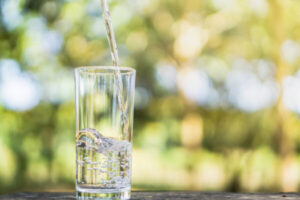
UV water disinfection systems can be used in homes to treat drinking water at the point of entry or point of use. This helps to ensure safe water, especially in areas where private wells or other non-municipal sources may be contaminated.
Municipal Water Treatment
Municipal water treatment plants use UV light to disinfect large volumes of water efficiently, meeting regulatory standards for pathogen reduction. UV drinking water disinfection systems are vital for ensuring that water remains safe for the entire community.
Emergency and Portable Systems
UV drinking water treatment systems are also useful in emergency situations or for travelers. Portable UV devices provide a quick and effective way to disinfect water on the go, ensuring access to safe drinking water wherever needed.
Maintenance and Operation of UV Drinking Water Treatment Systems
Routine Maintenance Tips
 To maintain optimal UV output, regular cleaning of the quartz sleeves is necessary. UV lamps should also be replaced on a scheduled basis to ensure continuous effectiveness, typically after around 9,000 hours of use. LightSources offers proprietary LongLife+™ UV lamp technology that eliminates accelerated depreciation in high-intensity lamps extending lamp life. Standard quartz lamps maintain 65% of their UVC output at 9,000 hours, whereas lamps treated with LongLife+™ technology maintain up to 80% of UVC output at 16,000 hours. * Life claim testing done under laboratory conditions. Actual performances depend on operating conditions.
To maintain optimal UV output, regular cleaning of the quartz sleeves is necessary. UV lamps should also be replaced on a scheduled basis to ensure continuous effectiveness, typically after around 9,000 hours of use. LightSources offers proprietary LongLife+™ UV lamp technology that eliminates accelerated depreciation in high-intensity lamps extending lamp life. Standard quartz lamps maintain 65% of their UVC output at 9,000 hours, whereas lamps treated with LongLife+™ technology maintain up to 80% of UVC output at 16,000 hours. * Life claim testing done under laboratory conditions. Actual performances depend on operating conditions.
Monitoring and Safety Features
UV disinfection systems should include UV intensity monitoring to ensure the system is performing correctly. Safety interlocks and alarms prevent improper operation, ensuring that the system remains effective and safe.
Frequently Asked Questions
Is UV Disinfection Effective Against All Pathogens?
UV disinfection is highly effective against a wide range of pathogens, including bacteria, viruses, and protozoa. However, proper system design and operation are essential for ensuring complete pathogen inactivation.
Does UV Disinfection Affect Water Taste or Odor?
No, UV disinfection does not affect the taste, odor, or chemical composition of the water, preserving its natural quality.
UV disinfection for drinking water offers an efficient, chemical-free method for ensuring water safety. With instant disinfection, low maintenance, and no alteration of water taste or odor, UV drinking water treatment is an ideal solution for both residential and municipal water supplies.
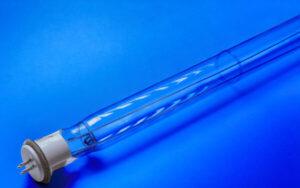 LightSources’ UV Drinking Water Disinfection Solutions
LightSources’ UV Drinking Water Disinfection Solutions
LightSources offers UVC germicidal lamps and OEM solutions with prototype development, and custom, proprietary UVC lamp development for air, surface, and water UV disinfection.
Our UV-C Lamp Technology
LightSources offers a wide range of high-quality UV-C germicidal lamps designed for disinfection applications, including drinking water treatment. Our lamps are engineered to deliver consistent and effective UV output, ensuring maximum pathogen inactivation in water treatment systems.
Customized Solutions
We provide custom-designed UV lamps tailored to specific system requirements, working closely with OEMs and system integrators to develop efficient and reliable UV disinfection systems. From prototypes to full production, we offer flexible solutions to meet the unique needs of each client.
Commitment to Quality and Safety
LightSources is an ISO9001:2015 registered UV lamp supplier adhering to strict international standards and continuously investing in research and development to enhance UV disinfection technology. Our UV-C lamps are designed for long-lasting performance, ensuring effective disinfection while maintaining safety and efficiency.
LightSources is a trusted supplier of UVC germicidal lamps, with over 40 years of experience in designing, engineering, and manufacturing lamps for disinfection systems worldwide. Our commitment to innovation and quality ensures that our lamps meet the evolving needs of the water treatment industry.
LAMP PRODUCT DATA:
UV Germicidal LampsLAMP APPLICATIONS:
UV Germicidal ApplicationsLightSources specializes in manufacturing high-quality UV-C germicidal lamps for various disinfection applications. With decades of experience, we supply reliable and effective UV disinfection lamp solutions to OEMs and system integrators worldwide. Contact us today to learn how our UV germicidal lamps can support your UV drinking water disinfection needs.
This post is also available in:
 Chinese (Simplified)
Chinese (Simplified)


